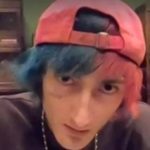A shocking new study appears to lend a great deal of credence to those who claim that America doesn’t have a gun problem so much as it has a behavioral problem, especially among our youth.
According to a report by the Citizen’s Commission on Human Rights International, “at least 37 school shootings and/or school-related acts of violence have been committed by those taking or withdrawing from psychiatric drugs resulting in 175 wounded and 82 killed.
While noting that “in other school shootings, information about their drug use was never made public—neither confirming or refuting if they were under the influence of prescribed drugs,” the report went on to say that the most pertinent aspect about the more than three dozen cases is that they are the only ones “where the information about…psychiatric drug use was made public.”
Here are several examples cited in the report:
- May 1, 2017 – Austin, Texas: Kendrex J. White, 21, stabbed four people with a machete-like hunting knife at the University of Texas, killing one and wounding three. Police said that the suspect had recently been involuntarily committed for psychiatric evaluation and treatment in another city. He also had a DUI charge. When he was arrested, he allegedly told police he had taken two “happy pills” identified as Zoloft.
- November 20, 2014 – Tallahassee, Florida: 31-year-old Myron May, a Florida State University alum, opened fire in the school’s library where hundreds of students were studying, wounding three before he was shot and killed by police. May’s friends told police he had recently been seen by a psychiatrist for having difficulty concentrating; he was prescribed Wellbutrin, “and the ADHD drug Vyvanse, a combination which can cause paranoia.” In fact, he began “acting strangely and hearing voices, convinced that he was being spied on.” He checked himself into a mental health treatment center a few months before the incident.
- June 5, 2014 – Seattle, Washington: 26-year-old Aaron Ybarra opened fire with a shotgun at Seattle Pacific University, killing one student and wounding two others. Ybarra planned to kill as many people as possible and then kill himself. Roughly two years earlier, Ybarra self-reported that he had been prescribed the antidepressant Prozac and antipsychotic Risperdal.
- October 21, 2013 – Starks, Nevada: 12-year-old Jose Reyes opened fire at Sparks Middle School, killing a teacher and wounding two classmates before committing suicide. Police found that Reyes had been seeing a psychotherapist 3 days before the shooting and was prescribed an antidepressant.
- September 21, 2011 – Myrtle Beach, South Carolina: 14-year-old Christian Helms had two pipe bombs in his backpack, when he shot and wounded Socastee High School’s “resource” (police) officer. A subsequent investigation said that Helms was planning a Columbine-type of attack and had even made a list of people he wanted to kill. Helms had been taking drugs for attention deficit hyperactivity disorder and depression.
- September 23, 2008 – Kauhajoki, Finland: 22-year-old culinary student Matti Saari shot and killed 9 students and a teacher, and wounded another student, before killing himself. He was taking two psychotropic medications including Xanax and had been seeing a psychologist.
- August 30, 2006 – Hillsborough, North Carolina: 19-year-old Alvaro Rafael Castillo shot and killed his father, then drove to Orange High School where he opened fire. Two students were wounded; his mother said he was being treated for depression.
- March 21, 2005 – Red Lake, Minnesota: 16-year-old Jeff Weise, on Prozac, shot and killed his grandfather and his grandfather’s girlfriend, then went to his school on the Red Lake Indian Reservation where he shot dead 5 students, a security guard, and a teacher, and wounded 7 before killing himself.
- April 20, 1999 – Columbine, Colorado: 18-year-old Eric Harris and his accomplice, Dylan Klebold, killed 12 students and a teacher and wounded 26 others before killing themselves. Harris was taking the antidepressant Luvox, but Klebold’s medical records remain under seal.
And so on.
Left-leaning publications and experts are loathe to blame mental health because they say they don’t want to create a “stigma” about the issue. But clearly, as this new report notes, there is a distinct link between such shootings and psychotic drugs and treatment.
“How does serious mental illness factor in? And what steps can government take to mitigate the role of untreated mental illness in producing violent threats?” noted Amy Swearer, a legal fellow in the Meese Center for Legal and Judicial Studies at the Heritage Foundation in February 2019 on the one-year anniversary of the horrific mass shooting in Parkland, Fla.
“These questions merit deliberate, thoughtful examination, not reflexive calls for broad gun control.”










